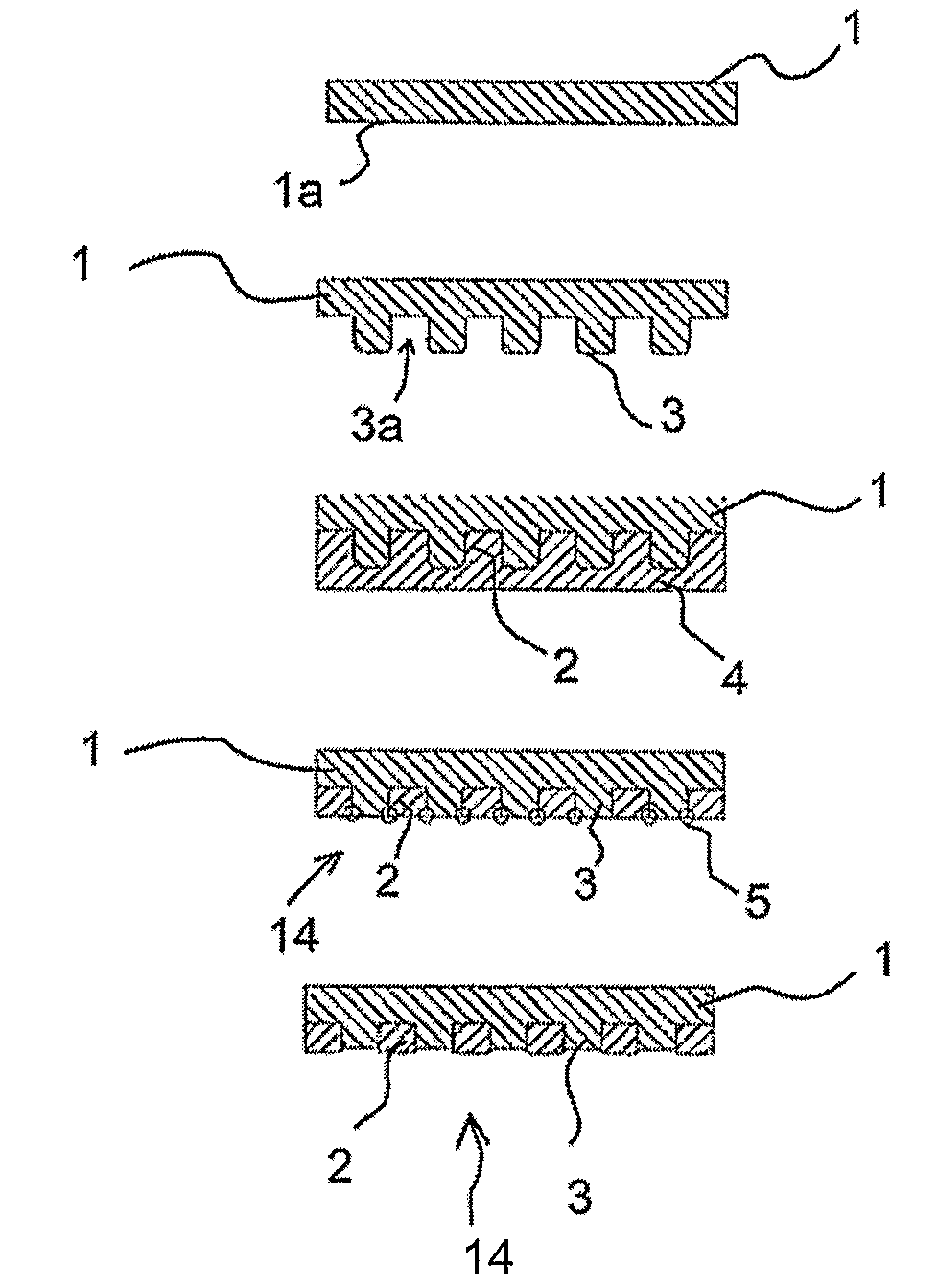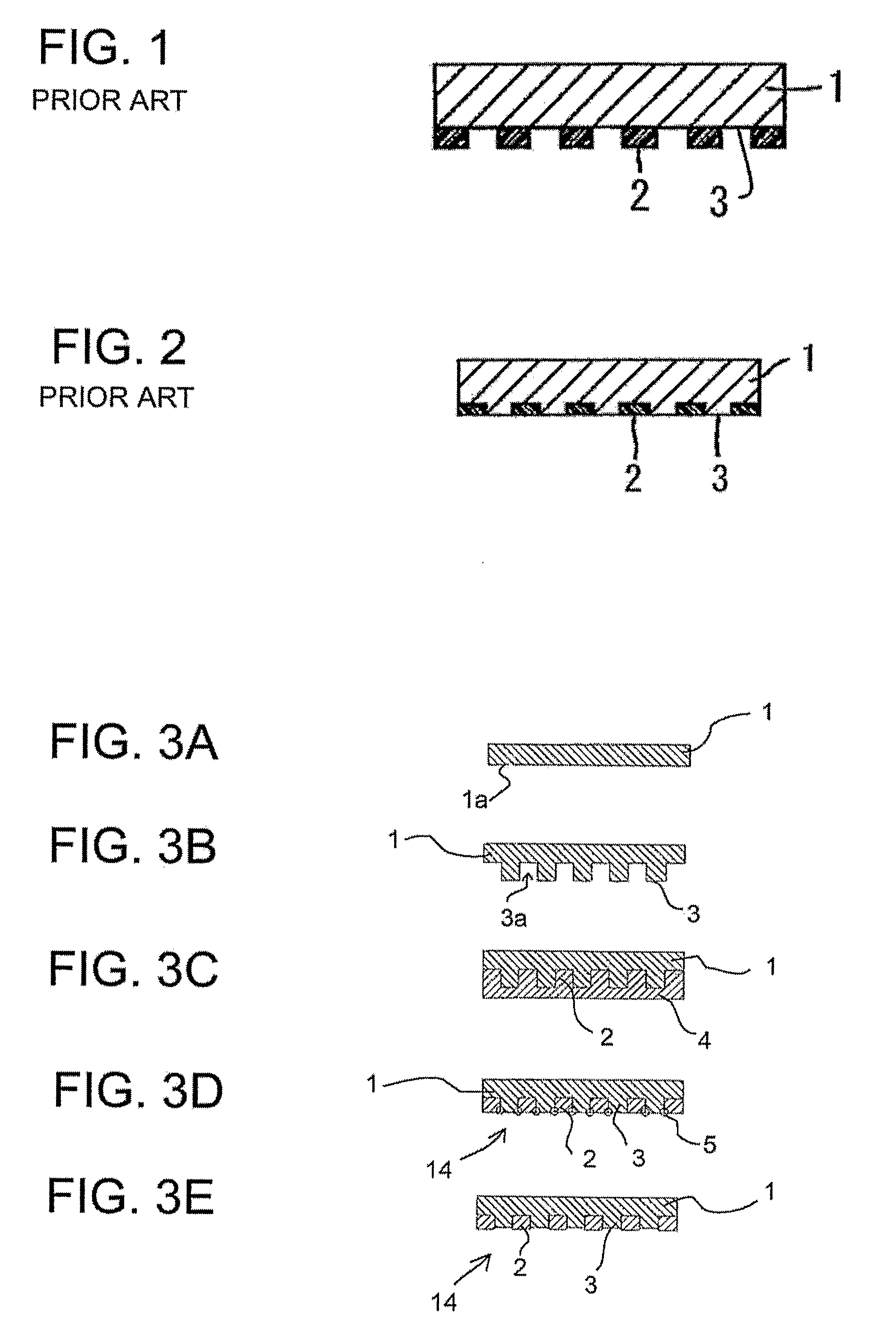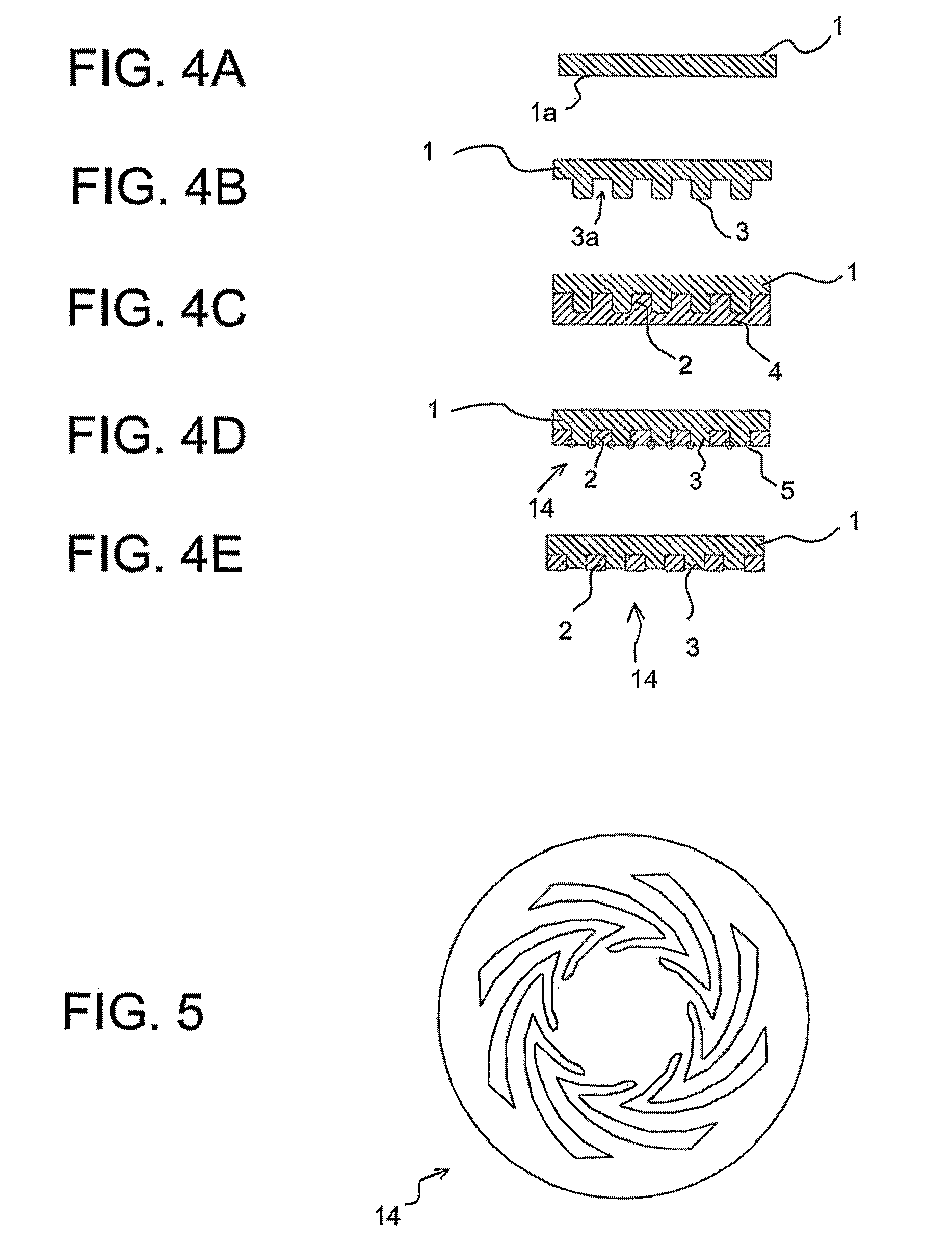Electrode tool for electrochemical machining and method for manufacturing same
- Summary
- Abstract
- Description
- Claims
- Application Information
AI Technical Summary
Benefits of technology
Problems solved by technology
Method used
Image
Examples
first embodiment
[0032] Referring to FIGS. 3A-3E, a process for forming an electrode tool for electrochemical machining according to the present invention will now be described.
[0033] In FIG. 3A, an electrode substrate 1, which is formed preferably from copper alloy brass, includes a surface la that is used as a machining electrode. The machining electrode surface 1a is washed, and, as shown in FIG. 3B, lands 3 are then milled on the surface 1a by groove machining. The lands 3 together form a conductive pattern, such as the conductive pattern 14 shown in FIG. 5. After the conductive pattern 14 is formed, the machining electrode surface 1a is degreased and washed.
[0034] Next, as shown in FIG. 3C, the top of the machining electrode surface 1a is molded with epoxy resin to form a hard insulating resin layer 4. The hard insulating resin layer 4 is polished by a polishing machine to gradually thin it until, as shown in FIG. 3D, the conductive pattern 14 becomes visible therethrough, with insulating resi...
second embodiment
[0036] An electrode tool for electrochemical machining according to the present invention may be fabricated by the process illustrated in FIGS. 4A-4E.
[0037] In the second embodiment, copper alloy brass is used as the electrode substrate 1. As shown in FIG. 4A, the surface 1a to be used as the machining electrode is washed. Next, as shown in FIG. 4B, lands 3 are milled on the surface 1a of the electrode substrate by groove machining to form the conductive pattern 14 shown in FIG. 5. After the conductive pattern 14 is formed, the edges of the lands 3 that jut into adjacent grooves 3a are rounded, and the surface 1a of the machining electrode is washed.
[0038] As shown in FIG. 4C, the surface 1a of the machining electrode is molded with epoxy resin to form a hard insulating resin layer 4 over the machining electrode. The hard insulating resin layer 4 is then removed by polishing, and an insulating resin 2 remains in the grooves after polishing. The hard insulating resin layer 4 is grad...
third embodiment
[0040] An electrode tool for electrochemical machining according to the present invention may also be fabricated by the process illustrated in FIGS. 4A-4E.
[0041] Specifically, an austenitic stainless steel SUS 304 is used as the electrode substrate 1. The surface to be used as the machining electrode is washed. As shown in FIG. 4B, groove machining of the surface of the machining electrode by laser machining is performed to form the lands 3. The lands 3 together form an electrode conductive pattern 14 such as that shown in FIG. 5.
[0042] After formation of the conductive pattern 14, the edges of the lands 3 that jut into the grooves 3a are rounded, and the machining surface is degreased and washed. As shown in FIG. 4C, the surface 1a of the machining electrode is molded with epoxy resin to form a hard insulating resin layer 4. The hard insulating resin layer 4 is polished and gradually thinned it until, as shown in FIG. 4D, the conductive pattern 14 becomes visible. Almost no burrin...
PUM
| Property | Measurement | Unit |
|---|---|---|
| Length | aaaaa | aaaaa |
| Length | aaaaa | aaaaa |
| Length | aaaaa | aaaaa |
Abstract
Description
Claims
Application Information
 Login to View More
Login to View More - R&D
- Intellectual Property
- Life Sciences
- Materials
- Tech Scout
- Unparalleled Data Quality
- Higher Quality Content
- 60% Fewer Hallucinations
Browse by: Latest US Patents, China's latest patents, Technical Efficacy Thesaurus, Application Domain, Technology Topic, Popular Technical Reports.
© 2025 PatSnap. All rights reserved.Legal|Privacy policy|Modern Slavery Act Transparency Statement|Sitemap|About US| Contact US: help@patsnap.com



